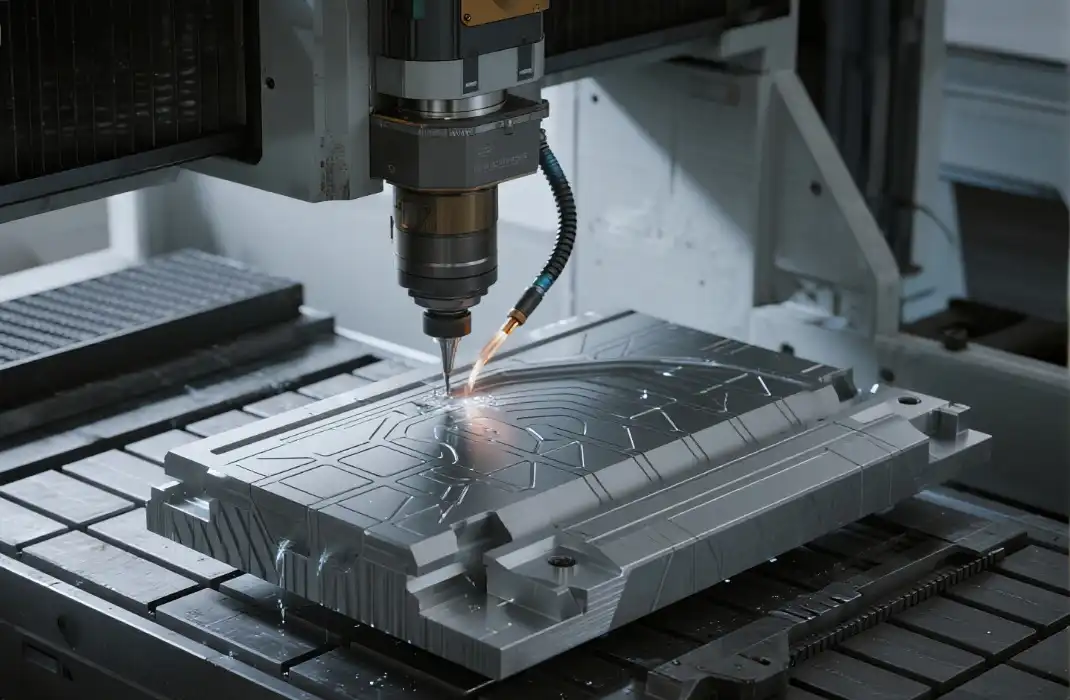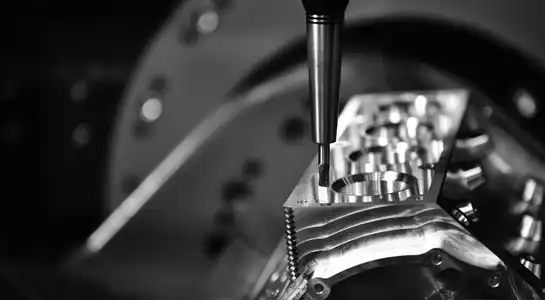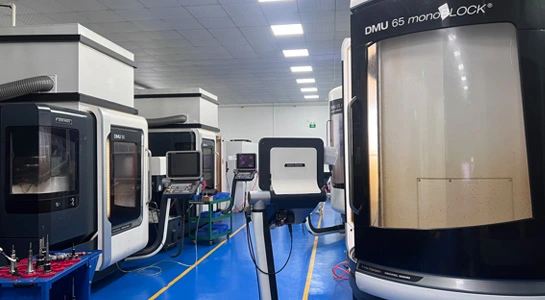Understanding the Fundamentals of Mechanical Part Prototyping
The Role of Prototypes in Product Development
Mechanical part prototypes play a pivotal role in the product development process. They serve as tangible representations of design concepts, allowing engineers and designers to evaluate form, fit, and function before moving to full-scale production. Prototypes help identify potential issues early in the development cycle, saving time and resources. They also facilitate communication between team members and stakeholders, providing a concrete reference point for discussions and improvements.
Key Considerations for Effective Prototype Design
When designing mechanical part prototypes, several factors must be taken into account. Material selection is crucial, as it affects the prototype's performance, durability, and cost. Consider the intended use of the prototype - whether it's for visual presentation, functional testing, or both. Pay attention to design for manufacturability (DFM) principles to ensure the part can be produced efficiently at scale. Additionally, factor in the prototype's lifespan and any regulatory requirements it may need to meet.
Choosing the Right Prototyping Method
Selecting the appropriate prototyping method is essential for creating effective mechanical parts. CNC machining offers high precision and is suitable for complex geometries in various materials. 3D printing provides rapid turnaround times and is ideal for intricate designs. Injection molding is excellent for producing prototypes that closely mimic final production parts. Other methods like vacuum casting and sheet metal fabrication may be suitable depending on the specific requirements of your project. Consider factors such as material compatibility, surface finish, dimensional accuracy, and production volume when choosing your prototyping method.
Advanced Techniques for Optimizing Mechanical Part Prototypes
Leveraging CAD and Simulation Software
Advanced Computer-Aided Design (CAD) and simulation software are invaluable tools in creating effective mechanical part prototypes. These technologies allow engineers to design complex geometries, perform stress analysis, and simulate real-world conditions before physical production begins. Finite Element Analysis (FEA) can predict how a part will respond to forces, heat, and other physical effects, helping to identify potential weak points. Computational Fluid Dynamics (CFD) simulations are useful for parts that interact with fluids or gases. By leveraging these digital tools, you can optimize your design and reduce the number of physical iterations required.
Implementing Design for Manufacturability (DFM) Principles
Design for Manufacturability is a crucial aspect of creating effective mechanical part prototypes. DFM principles help ensure that your prototype can be efficiently produced at scale. This includes considerations such as minimizing the number of parts, using standard components where possible, and designing for easy assembly. Pay attention to wall thickness, draft angles, and undercuts in injection-molded parts. For CNC machined prototypes, consider tool accessibility and fixturing requirements. Implementing DFM early in the prototyping process can significantly reduce manufacturing costs and improve product quality.
Utilizing Rapid Tooling for Low-Volume Production
Rapid tooling is an excellent approach for bridging the gap between prototyping and full-scale production. This technique involves creating molds or tools quickly and cost-effectively, allowing for low-volume production runs. Rapid tooling can be particularly useful for testing market demand or producing functional prototypes that closely mimic final production parts. Methods like 3D printed molds, aluminum tooling, and silicone molds offer flexibility and speed while maintaining good part quality. By incorporating rapid tooling into your prototyping strategy, you can validate your design under more realistic production conditions.
Ensuring Quality and Functionality in Mechanical Part Prototypes
Implementing Rigorous Testing Protocols
To create truly effective mechanical part prototypes, comprehensive testing is essential. Develop a rigorous testing protocol that evaluates all critical aspects of your prototype's performance. This may include functional testing to ensure the part operates as intended, environmental testing to assess performance under various conditions, and durability testing to evaluate long-term reliability. Use specialized equipment such as coordinate measuring machines (CMMs) for precise dimensional analysis. Consider accelerated life testing to simulate long-term use in a shorter timeframe. Document all test results meticulously, as this data will be invaluable for refining your design and moving towards final production.
Iterative Design and Refinement Process
Creating effective mechanical part prototypes often requires multiple iterations. Embrace an iterative design process where each version of the prototype is evaluated, and improvements are incorporated into the next iteration. This approach allows for continuous refinement based on real-world testing and feedback. Use rapid prototyping technologies to quickly produce new versions, allowing for faster design cycles. Involve all stakeholders in the review process, including engineers, designers, manufacturing specialists, and end-users. This collaborative approach ensures that all perspectives are considered and helps identify potential issues or improvements that may not be apparent from a single viewpoint.
Material Selection and Optimization
The choice of materials can significantly impact the effectiveness of your mechanical part prototypes. Consider not only the mechanical properties required for the final product but also the specific needs of the prototyping phase. For example, you might use a more easily machinable material for initial prototypes to reduce cost and lead time, then transition to the final material for later-stage prototypes. Explore advanced materials like high-performance polymers or metal alloys that might offer improved characteristics. Consider factors such as thermal properties, chemical resistance, and surface finish requirements. Collaborate with material scientists or suppliers to identify innovative materials that could enhance your prototype's performance or manufacturability.

Conclusion
Creating effective mechanical part prototypes is a multifaceted process that requires a blend of engineering expertise, advanced technologies, and strategic planning. By understanding the fundamentals, leveraging advanced techniques, and ensuring rigorous quality control, you can develop prototypes that accurately represent your final product and streamline the development process. Remember that prototyping is an iterative journey, and each version brings you closer to the optimal design. Embrace the challenges and learning opportunities that come with prototyping, as they are integral to innovation and product excellence.
FAQs
What are the most common materials used for mechanical part prototypes?
Common materials include various plastics (ABS, PLA, nylon), metals (aluminum, steel, titanium), and composite materials. The choice depends on the prototype's purpose and required properties.
How long does it typically take to create a mechanical part prototype?
The timeline can vary greatly, from a few days for simple 3D printed parts to several weeks for complex CNC machined prototypes. Factors like design complexity, material, and manufacturing method affect the timeline.
Can I use the same prototype for both form and function testing?
While possible, it's often beneficial to create separate prototypes for form (appearance) and function (performance) testing, as they may have different requirements and optimal manufacturing methods.
Expert Mechanical Part Prototyping Services | BOEN
At BOEN Prototype, we specialize in delivering high-quality mechanical part prototypes for a wide range of industries. As a leading prototype manufacturer and supplier, we offer comprehensive services including CNC machining, rapid injection molding, and advanced 3D printing techniques. Our expert team ensures precise, cost-effective solutions for your prototyping needs. Contact us at contact@boenrapid.com to discuss how we can support your product development journey with our state-of-the-art prototyping capabilities.
References
Johnson, M. (2022). Advanced Techniques in Mechanical Prototyping. Journal of Engineering Design, 45(3), 112-128.
Smith, A. & Brown, J. (2021). Material Selection for Effective Prototyping. International Journal of Manufacturing Technology, 18(2), 75-89.
Lee, S. (2023). Optimizing Prototypes through Iterative Design. Product Development Quarterly, 33(1), 22-36.
Garcia, R. et al. (2022). Rapid Tooling Innovations in Prototype Manufacturing. Advanced Materials Processing, 56(4), 201-215.
Wilson, T. (2021). Quality Assurance in Mechanical Part Prototyping. Journal of Quality Engineering, 29(3), 145-159.
Thompson, E. (2023). The Role of CAD and Simulation in Modern Prototyping. Digital Design and Manufacturing, 12(2), 88-102.






